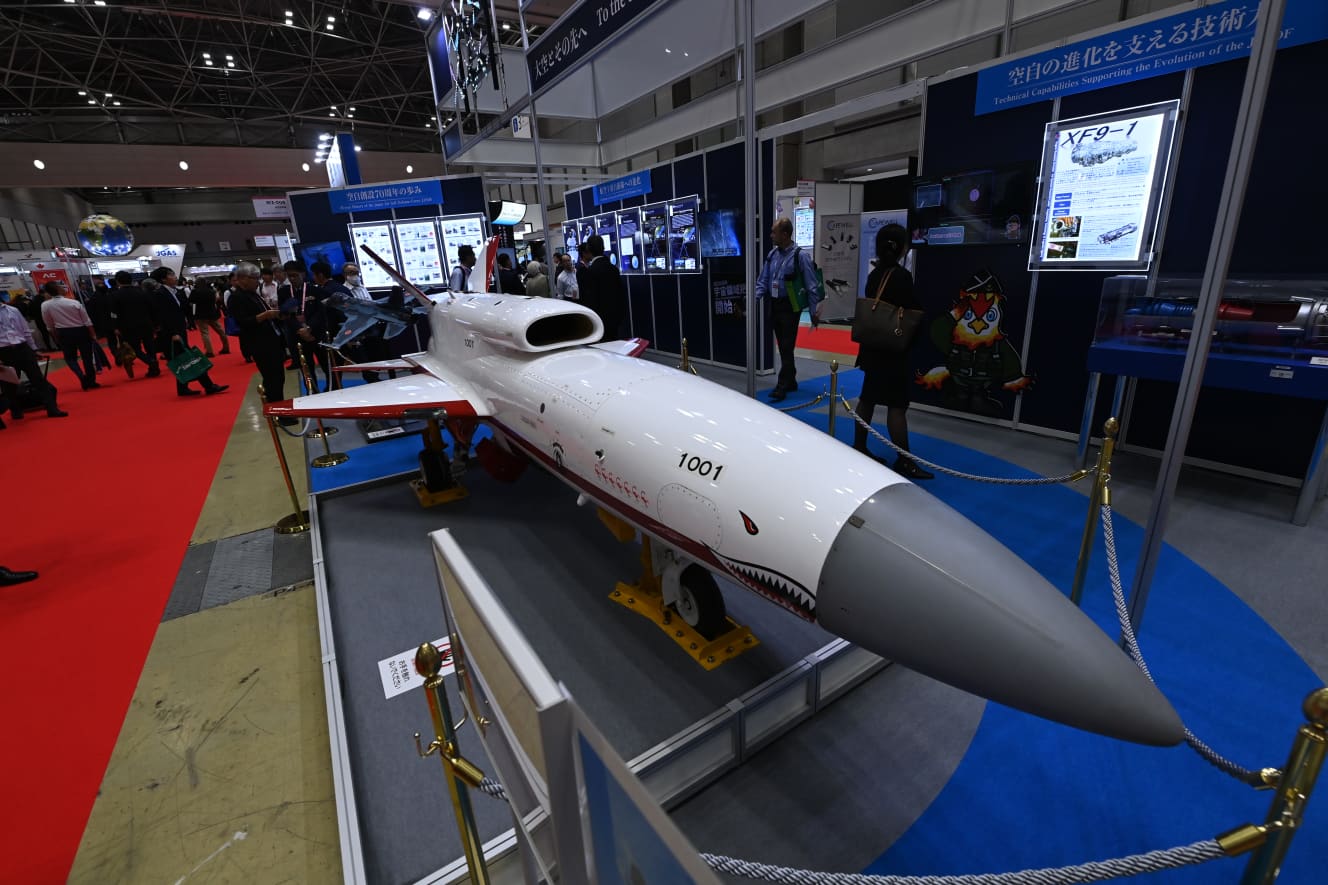Self-Thinking Military Drones: 150 km/h Kamikaze Capabilities
Military drones (unmanned aerial vehicles) that have been deployed one after another on battlefields have drastically changed the nature of warfare. In Ukraine, thousands of drones are flying in the skies, being used to gain advantages in the ongoing conflict. What kind of development competition is taking place worldwide? We covered the cutting-edge drones exhibited at the “2024 International Aerospace Exhibition” (hosted by the Society of Japanese Aerospace Companies, held in mid-October).
One notable development comes from Boeing, which is advancing work on the stealth unmanned aircraft “MQ-28,” equipped with artificial intelligence. Measuring 11 meters in length, this large drone has a range of 3,700 kilometers. Its standout feature is its AI module, enabling it to autonomously perform tasks such as information gathering, surveillance, and attacks. It is also expected to collaborate with manned aircraft on missions.
What exactly can AI integration accomplish?
“For instance, imagine you’re driving a car, and this unmanned aircraft is flying alongside you. If a threat approaches from the front, you could instruct it, ‘Go ahead and deal with them.’ The unmanned aircraft would then independently assess the situation and move ahead to confront the threat. That’s the kind of functionality it offers,” explained a Boeing representative.
It is capable of flying 1,000 kilometers.
The nose of the aircraft can be equipped with different devices, such as radar or cameras, depending on the mission. For example, in a mission where the drone is tasked with photographing an enemy base and returning, traditional methods required extensive programming for the route, speed, and various other procedures. However, with an AI-equipped aircraft, a single command allows it to independently determine the optimal route to avoid detection, complete its mission, and return. Boeing is focusing on developing AI-equipped aircraft as the next generation of unmanned aerial vehicles.
Alongside Boeing, another leader in the aviation industry is Airbus (France). The company is developing the “VSR700,” a helicopter-type unmanned aircraft known for its long-range capabilities.
“The typical range for this type of drone is about 200 kilometers, but the ‘VSR700,’ which uses a diesel engine, can fly up to 1,000 kilometers. It can carry equipment weighing up to 200 kilograms. For instance, it could be outfitted with a missile on the left side and a sonar for submarine detection on the right,” said a company representative.
Communication with the aircraft is maintained through VHF or UHF radio signals for distances up to 150 kilometers, while satellite communication is used for longer distances. Priced between 2 billion and 3 billion yen per unit, the drone has already been adopted by the French military and is being marketed to Japan.
Miniaturization in Reconnaissance and Artillery
Ukraine has deployed WB Group’s (Poland) reconnaissance aircraft “FLYEYE” and suicide drone “WARMATE” in its conflict with Russia. The “FLYEYE,” with a wingspan of 3.6 meters and a length of 1.8 meters, can reach a maximum speed of 120 km/h, a maximum flight altitude of 3,000 meters, and can fly continuously for over 2.5 hours. The “WARMATE,” with a wingspan of 1.6 meters and a length of 1.1 meters, can fly for 70 minutes and reach a target impact speed of 150 km/h.
Both can be disassembled and packed into a bag for soldiers to carry, and assembly and launch take only a few minutes. Videos of the “WARMATE” in action can be seen on WB Group’s website.
According to Mr. Hoshi Naoto, the representative of Farostar, the Japanese distributor for WB Group, the price of the aircraft is “several tens of millions of yen per unit.” The drones have been introduced in Ukraine since 2014. Mr. Hoshi explains that a major trend in the battlefield today is the wave of miniaturization.
“Large ground-based weapons are being destroyed by inexpensive unmanned aerial vehicles, and large drone reconnaissance aircraft are becoming targets for smaller drones. Drones are becoming smaller. Reconnaissance is shifting from large drones to small drones, and artillery strikes are being replaced by precise attacks using small drones.”
The next-generation fighter aircraft, which Japan, the UK, and Italy aim to jointly develop by fiscal 2035, will be linked with Mitsubishi Heavy Industries’ combat support unmanned aircraft. It is still in the concept stage but features AI technology and stealth design. The idea is that the unmanned aircraft will work in coordination with manned aircraft over a network.
“We are considering an operation where the unmanned aircraft will go to areas that manned fighter jets cannot approach, detect enemy threats, and then launch missiles based on instructions from the manned aircraft. We envision fighting alongside multiple aircraft with the manned fighter jet, where AI makes decisions based on the pilot’s instructions and carries out autonomous attacks. We believe AI technology is crucial to the development, and we are advancing research on AI-equipped technology that we received an order for from the Ministry of Defense. We also have former Japan Air Self-Defense Force pilots within the company,” said a Mitsubishi Heavy Industries representative.
Will the demand for unmanned vehicles continue to grow on the battlefield? A senior official from the Ministry of Defense shares their thoughts:
“Unmanned vehicles do not put the life of the pilot at risk, and they also save substantial costs and time required to train a pilot. In Japan, where the population is declining, no matter how many fighter jets we have, we will face a shortage of pilots. There are ways of fighting that are only possible with unmanned systems, and there is great expectation from the field.”
The day may come when human soldiers disappear from the battlefield, and unmanned weapons engage in combat with one another.




Interview, text, and photography by Masayoshi Katayama: Masayoshi Katayama
Journalist
